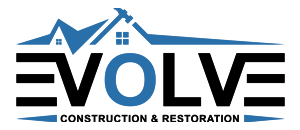The Critical Role of Roof Insulation in Texas’s Blazing Summers
In the sweltering heat of a Texan summer, commercial buildings face the relentless challenge of keeping interiors cool and energy bills at bay. Poorly insulated roofs act like magnifying glasses, drawing in heat and driving up cooling costs, a scenario far too common across the Lone Star State’s business landscape. The sense of urgency for local companies cannot be overstated; ineffective roof insulation is not just a comfort issue, it hits the bottom line hard. Here lies the potential for transformative energy gains and financial savings, ready for the taking for those prepared to act swiftly. Emphasizing the need for Texas commercial roof insulation techniques, this article will illuminate the path to turning a daunting challenge into a golden opportunity for commercial efficiency.
Unlocking the Secrets to Energy and Cost Savings
Transitioning to effective roof insulation is an investment in the sustainability and profitability of a business. As Texan businesses increasingly feel the pinch of rising energy expenses, the need to explore and implement improved insulation methods is apparent. Smart insulation choices pay for themselves by reflecting back the sun’s intense rays, ensuring that air conditioning systems work less to maintain cooler indoor temperatures. This not only extends the life of HVAC units but also reduces greenhouse gas emissions, showcasing a company’s commitment to environmental responsibility. Effectively, businesses that prioritize up-to-date roof insulation stand to benefit from a significant reduction in energy consumption, as reports suggest savings could be as substantial as 15 percent.
Laying the Foundations for Energy-Efficient Operations
The evolution of insulation practices has introduced a variety of high-performance materials suitable for the unique Texas climate, from traditional fiberglass to advanced, reflective options. Knowing the regional building codes for insulation, which dictate minimum R-value requirements, is a starting place for any business looking to upgrade. These prescribed standards provide the blueprint for achieving optimal thermal resistance in the face of Texas’ blistering heat. Moreover, there’s an increasing trend towards using materials like spray foam, not just for its admirable R-value but also for its preventative qualities against air leaks. Through careful selection and application of these methods, Texas businesses are set up for a future where their commercial spaces are not only comfortable but economically maintained.
Understanding Texas’s Insulation Standards for Commercial Roofs
Every commercial landlord in Texas needs to be well-acquainted with the state’s building codes, especially when it pertains to insulation. These regulations are not arbitrary; they are designed to ensure that every commercial space is equipped to handle the intense climate of the region. Adhering to the proper R-value—a measure of thermal resistance—is essential, not just for legal compliance but for the assurance of peak performance of your insulation system. Selecting materials that meet or exceed these standards underlines a business’s dedication to quality and adherence to best practices. It’s through following these guidelines that businesses can ensure their operations remain cool and cost-effective, even in the peak of Texas heat.
Choosing the Right Roof Insulation Materials
Navigating through the various commercial roof insulation options can be challenging, but it’s a crucial decision for the energy efficiency of any Texan commercial property. From the commonly used fiberglass to sturdy rigid foam boards or the versatile spray foam, options abound, each with distinct advantages suitable for the Texan climate. Innovative materials like reflective coatings are gaining traction for their ability to repel heat, signifying a leap toward a greener and more cost-effective operation. These materials not only provide enhanced thermal resistance but also contribute to a building’s overall structural integrity. Businesses must consider longevity, effectiveness, and environmental impact when selecting the best insulation solutions to protect their premises from the Texas heat.
Advanced Techniques for Enhanced Insulation Efficiency
Spray foam insulation emerges as a standout choice among the many methods for insulating commercial roofs. Its ability to adhere to virtually any surface and expand to fill gaps makes it an all-encompassing solution for thermal regulation. Not only does it boast a high R-value, reflecting its superior insulating capabilities, but it also acts as a formidable barrier against air and moisture infiltration. The installation process, though requiring professional expertise, is quick and can be custom-fitted to any roof design, ensuring all nooks and corners are sealed for maximum efficiency. To see how this cutting-edge technique can be applied to enhance your commercial space, consult the services offered by Evolve Construction and their team of skilled professionals.
Maintaining Your Commercial Roof Insulation
Consistent maintenance plays a pivotal role in the longevity and efficiency of roof insulation in commercial properties. It’s not only about having the right materials in place; it’s about ensuring they continue to perform at their best over time. Regular inspections, especially after extreme weather events, can reveal potential issues before they become costly problems. Building owners should consider scheduling professional evaluations periodically to assess and repair any damage to insulation layers. Such proactive care is key to maintaining an energy-efficient commercial space and keeping insulation performance in top condition.
Cost-Effectiveness of Roof Insulation in Texas
When it comes to commercial roof insulation, the initial cost is often a top concern for business owners. However, it’s the long-term savings on energy bills that prove the real value of investing in proper insulation. In Texas, where the sun can be unforgiving, upgraded roof insulation has the potential to lead to substantial financial benefits. By weighing the upfront costs against the projected energy savings and improved HVAC efficiency, businesses can make informed decisions about their insulation investments. A well-insulated building not only saves money but also contributes to a more comfortable working environment for its occupants.
Wrap-Up: Ensuring a Trustworthy and Comfortable Commercial Space
The takeaway is clear: adequate roof insulation is indispensable for any commercial enterprise operating in the great state of Texas. By adhering to local standards, choosing suitable materials, and maintaining a diligent care routine, commercial entities can enjoy the fruits of an efficient, eco-friendly operation. Implementing top-tier insulation techniques is a smart business move that pays dividends in both comfort and cost. For those seeking to upgrade or install new roof insulation, the importance of partnering with experienced professionals cannot be overstressed. Discover more about how to make your commercial property a model of insulation excellence by visiting Evolve Construction and exploring their plethora of expert services.
Insider Secrets for Top-Notch Commercial Roof Insulation
Tip 1:
When selecting insulation materials for your Texas commercial roof, choose those with a higher R-value for better heat resistance. This investment will lead to increased energy efficiency and cost savings over time.
Tip 2:
Consider the use of reflective coatings alongside insulation techniques to further reduce heat absorption. In Texas’s sunny environment, these coatings can significantly lower roof surface temperatures.
Tip 3:
Regular inspections and maintenance of your roof insulation are crucial, especially after severe weather events. It ensures sustained performance and helps avoid costly repairs due to insulation damage.
Tip 4:
Spray foam insulation can be a game-changer for sealing air leaks and insulating irregular shapes. Its versatility makes it an excellent choice for complex commercial roofing structures in Texas.
Tip 5:
Before undertaking a commercial roof insulation project, check for incentives or rebates offered in Texas for energy-efficient upgrades. These can offset upfront costs and enhance your return on investment.
Expert Answers to Your Roof Insulation Queries
What are the most energy-efficient insulation materials for commercial roofs in Texas?
Materials with high R-values, such as polyurethane foam or reflective coatings, offer superior energy efficiency and are well-suited to Texas’s climate.
How does the climate in Texas affect the choice of insulation techniques for commercial buildings?
Texas’s hot summers demand insulation that can withstand intense heat without degrading, making materials like spray foam and reflective coatings ideal choices.
What is the recommended R-value for commercial roof insulation in Texas?
The Texas Department of Licensing and Regulation sets specific R-values for commercial insulation, and for most areas, an R-value of R-25 or higher is recommended.
How often should commercial roof insulation be inspected and maintained in Texas?
Commercial roof insulation should be inspected annually and after significant weather events to ensure it maintains its integrity and efficiency.
What are the cost considerations when upgrading insulation for a commercial roof in Texas?
While the initial investment may be higher for premium materials, the long-term energy savings and reduced maintenance costs make it a financially sensible decision.




